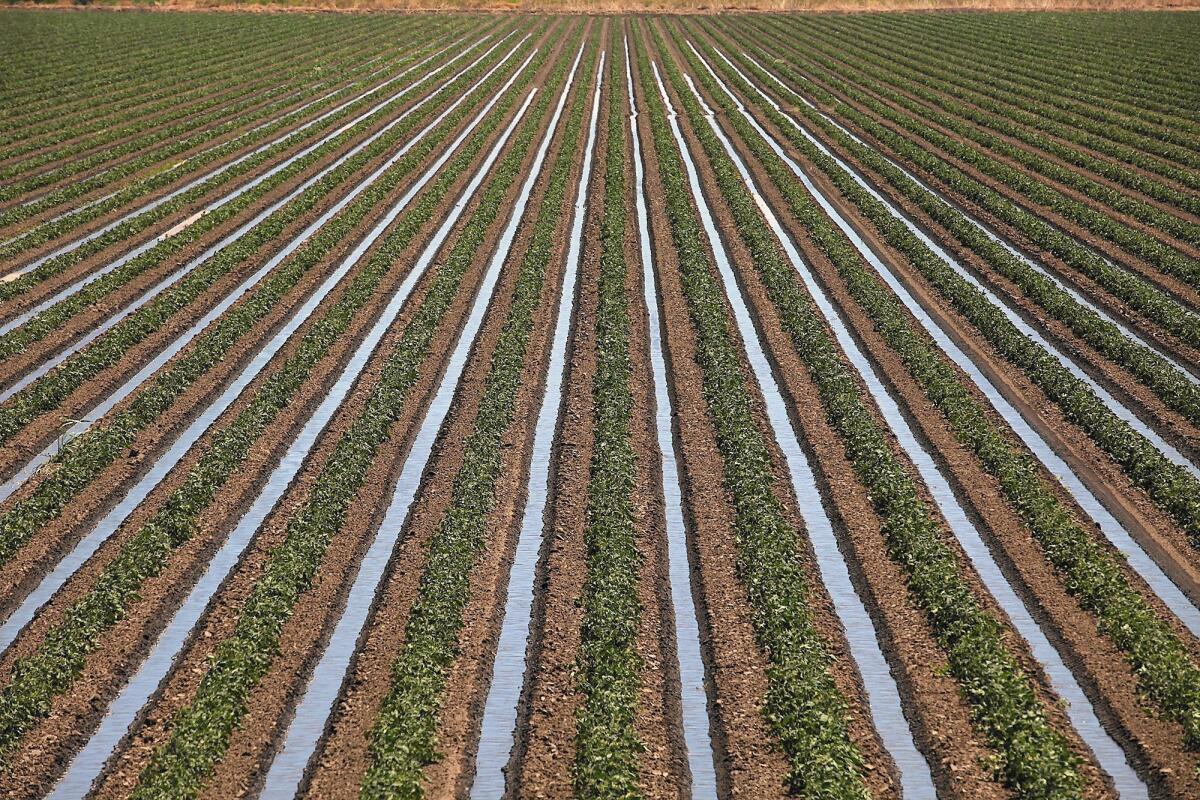Water conservation efforts pay off: U.S. usage lowest in decades

- Share via
Americans recently passed a milestone when federal officials reported that water use across the nation had reached its lowest level in more than 45 years: good news for the environment, great news in times of drought and a major victory for conservation.
What was surprising in the U.S. Geological Survey report released last week was how little of the 13% decline in national water usage was due to the public cutting back.
In drought-stricken areas, such as California and other states across the West, consumers are used to frequent warnings about the need to save water. Dry public fountains, limits on lawn watering and official requests for shorter showers have all been aimed at reducing water use at a time when reservoirs are shrinking and streams are running dry.
But it turns out that the public reduced water use by only about 5% from 2005 to 2010, the most recent period measured by the USGS.
The overwhelming savings came from big-scale industrial uses, government investigators found.
Molly Maupin, USGS hydrologist and lead author of the latest water survey, said about 75% of the decline in overall water usage is attributable to changes in electricity generation, and an additional 20% is due to new efficiencies in irrigation.
“Irrigation withdrawals in the United States continued to decline since 2005, and more croplands were reported as using higher-efficiency irrigation systems in 2010,” Maupin said. “Shifts toward more sprinkler and micro-irrigation systems nationally and declining withdrawals in the West have contributed to a drop in the national average.”
Still, the 5% reduction in public water use is important because it happened even as the population increased by about 4% and the number of people who had access to public water grew.
Per capita use declined to 89 gallons per day in 2010 from 100 gallons in 2005.
“Public supply’s decline was significant because it was the first time we have seen that,” said Maupin, who cautioned that it is difficult to pinpoint the exact reasons for the decrease. “We are reluctant to say cause and effect because there are so many variables. Surely there is some level of conservation,” she said of efforts to curb personal use. “We don’t know how much.”
In any case, industrial water use is key to understanding the overall decline.
In some cases, manufacturers have adopted techniques such as recycling of water to help lower costs. The 2007-09 recession brought downturns in production, and subsequent reductions in the amount of water needed to cool machines.
A crucial factor, the USGS found, was an increase in the number of power plants built or converted since the 1970s that use more efficient cooling-system technologies. Surveyors based their consumption estimates on flows in and out of 1,290 power plants.
Overall in the U.S., about 355 billion gallons of groundwater and surface water were used per day in 2010, compared with 410 billion a day in 2005.
Twelve states accounted for more than 50% of total water withdrawals. The largest was California, followed by Texas, Idaho, Florida, Illinois, North Carolina, Arkansas, Colorado, Michigan, New York, Alabama and Ohio.
California accounted for 11% of the total withdrawals. Still, the state, the nation’s top agricultural producer in terms of cash receipts, was able to sharply cut water use.
Californians in 2010 used an estimated 38 billion gallons of water a day, compared with 46 billion a day in 2005. The reduced use of surface water accounted for the savings; groundwater withdrawals were actually up because of the drought, which forced farmers to increase their reliance on irrigation.
Still, the overall savings was enough to give a big bump to the nation’s conservation picture.
“What happens in California has an impact on the national trends,” Maupin said.
Twitter: @latimesmuskal
More to Read
Sign up for Essential California
The most important California stories and recommendations in your inbox every morning.
You may occasionally receive promotional content from the Los Angeles Times.














